Astronomer Royal
This article needs additional citations for verification. (March 2011) |

Astronomer Royal is a senior post in the Royal Households of the United Kingdom. There are two officers, the senior being the Astronomer Royal dating from 22 June 1675; the second is the Astronomer Royal for Scotland dating from 1834.
The post was created by King Charles II in 1675, at the same time as he founded the Royal Observatory Greenwich. He appointed John Flamsteed, instructing him "forthwith to apply himself with the most exact care and diligence to the rectifying the tables of the motions of the heavens, and the places of the fixed stars, so as to find out the so-much desired longitude of places, for the perfecting the art of navigation."[1][2][3]
The Astronomer Royal was director of the Royal Observatory Greenwich from the establishment of the post in 1675 until 1972. The Astronomer Royal became an honorary title in 1972 without executive responsibilities and a separate post of Director of the Royal Greenwich Observatory was created to manage the institution.[3][4]
The Astronomer Royal today receives a stipend of 100 GBP per year and is a member of the Royal Household, under the general authority of the Lord Chamberlain. After the separation of the two offices, the position of Astronomer Royal has been largely honorary, though they remain available to advise the Sovereign on astronomical and related scientific matters, and the office is of great prestige.[5]
There was also formerly a Royal Astronomer of Ireland, a post that seemingly ended with Irish independence.
The Astronomer Royal is mentioned in H.G. Wells' novel The War of the Worlds and in George Orwell's Down and Out in Paris and London.[6] He also makes an appearance in the lyrics of Gilbert and Sullivan's The Pirates of Penzance[7] and plays an important role in Fred Hoyle's The Black Cloud.
Astronomers Royal[]
| # | Image | Name | Start year | End year | Reference |
|---|---|---|---|---|---|
| 1. |  |
John Flamsteed | 1675 | 1719 | [2][5] |
| 2. | 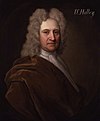 |
Edmond Halley | 1720 | 1742 | [2][5] |
| 3. | 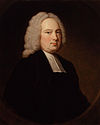 |
James Bradley | 1742 | 1762 | [2][5] |
| 4. |  |
Nathaniel Bliss | 1762 | 1764 | [2][5] |
| 5. |  |
Nevil Maskelyne | 1765 | 1811 | [2][5] |
| 6. | John Pond | 1811 | 1835 | [2][5] | |
| 7. | 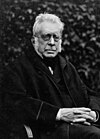 |
Sir George Biddell Airy | 1835 | 1881 | [4][5] |
| 8. | 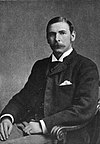 |
Sir William Christie | 1881 | 1910 | [4][5] |
| 9. |  |
Sir Frank Dyson | 1910 | 1933 | [4][5] |
| 10. | Sir Harold Spencer Jones | 1933 | 1955 | [4][5] | |
| 11. | Sir Richard van der Riet Woolley | 1956 | 1971 | [4][5] | |
| 12. | Sir Martin Ryle | 1972 | 1982 | [4][5] | |
| 13. |  |
Sir Francis Graham-Smith | 1982 | 1990 | [5] |
| 14. |  |
Sir Arnold Wolfendale | 1991 | 1995 | [5] |
| 15. | 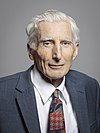 |
Martin Rees, Baron Rees of Ludlow | 1995 | Incumbent | [5] |
References[]
- ^ F Baily, "An Account of the Rev. John Flamsteed", reprinted in vol.28,at p.293. "The Museum of foreign literature, science and art", R Walsh et al., publ. E Litell, 1836.
- ^ a b c d e f g Forbes, Eric G. (1975). Greenwich Observatory, volume 1: Origins and Early History (1675–1835). London: Taylor & Francis. Bibcode:1975gosb.book.....F.
- ^ a b McCrea, William Hunter (1975). Royal Greenwich Observatory : an Historical Review Issued on the Occasion of its Tercentenary. London: Her Majesty's Stationery Office. Bibcode:1975rgo..book.....M.
- ^ a b c d e f g Meadows, A. J. (1975). Greenwich Observatory, volume 2: Recent History (1836–1975). London: Taylor & Francis. Bibcode:1975gosb.book.....F.
- ^ a b c d e f g h i j k l m n o p "Astronomer Royal". The British Monarchy. Royal Household. Archived from the original on 2016-03-08. Retrieved 2017-06-23.
- ^ p. 175, Penguin edition
- ^ "The Pirates of Penzance by Gilbert and Sullivan".
External links[]
- Astronomers Royal
- Ceremonial officers in the United Kingdom
- Lists of British people
- Positions within the British Royal Household
- Lists of space scientists
- Royal Observatory, Greenwich